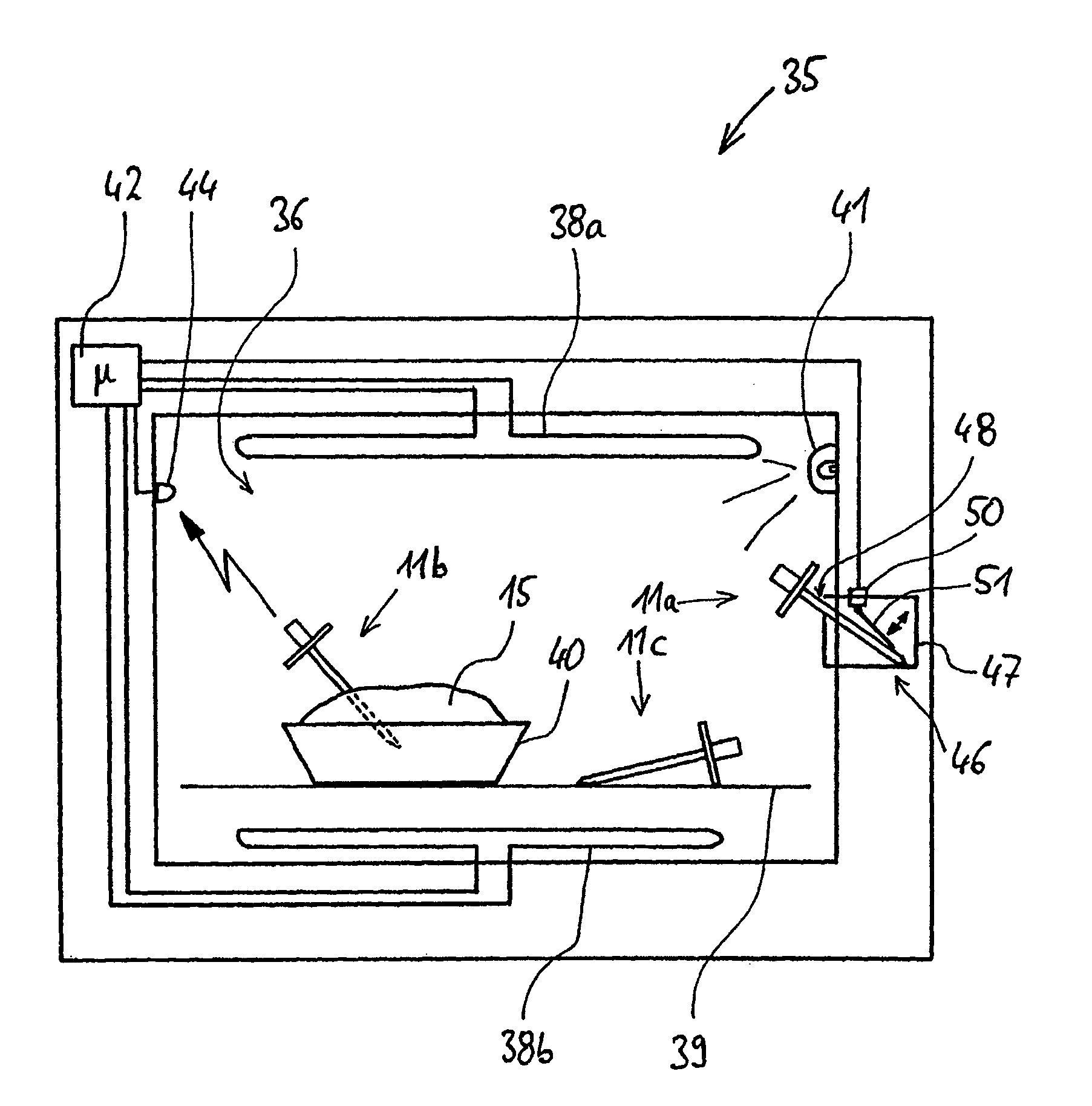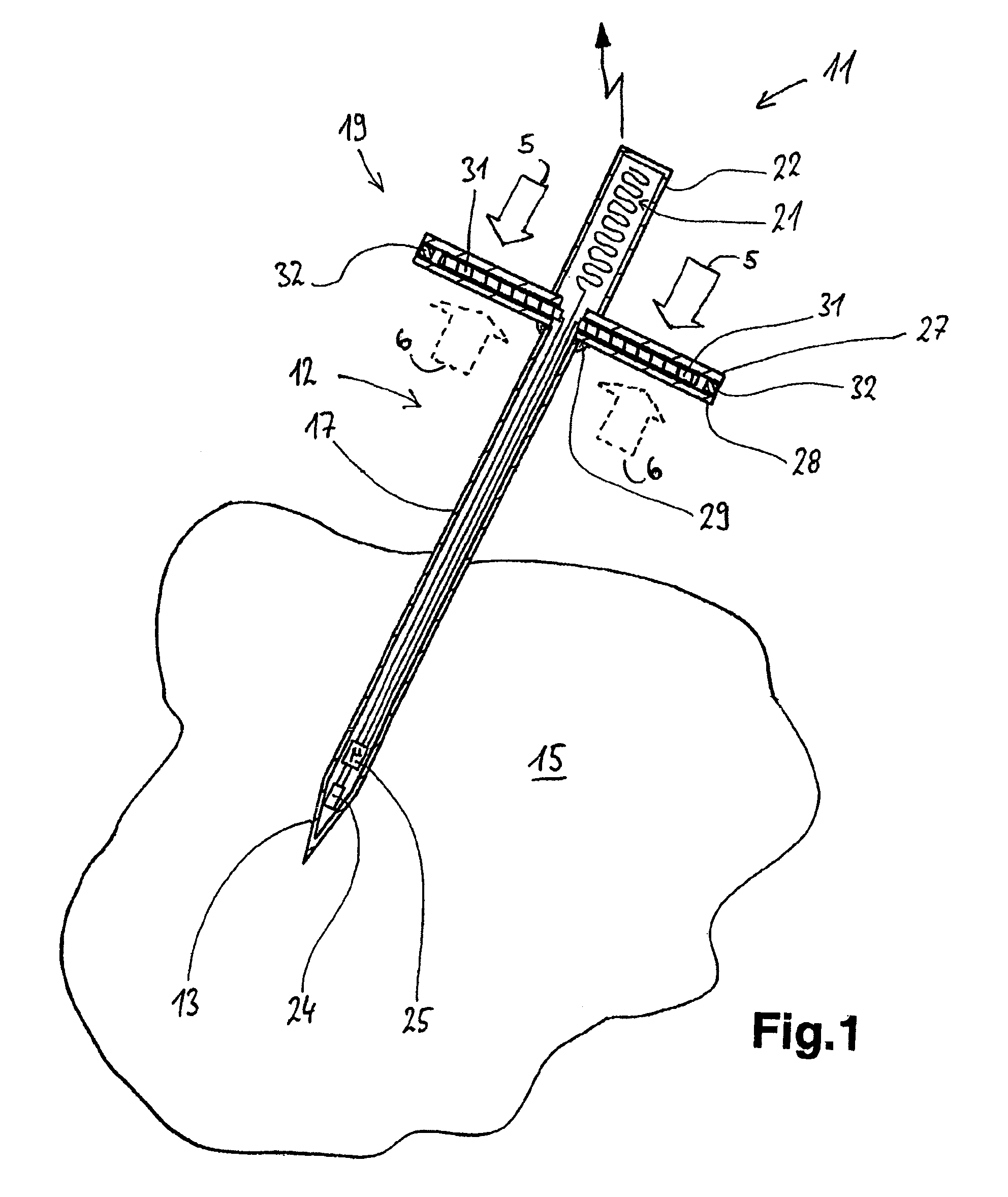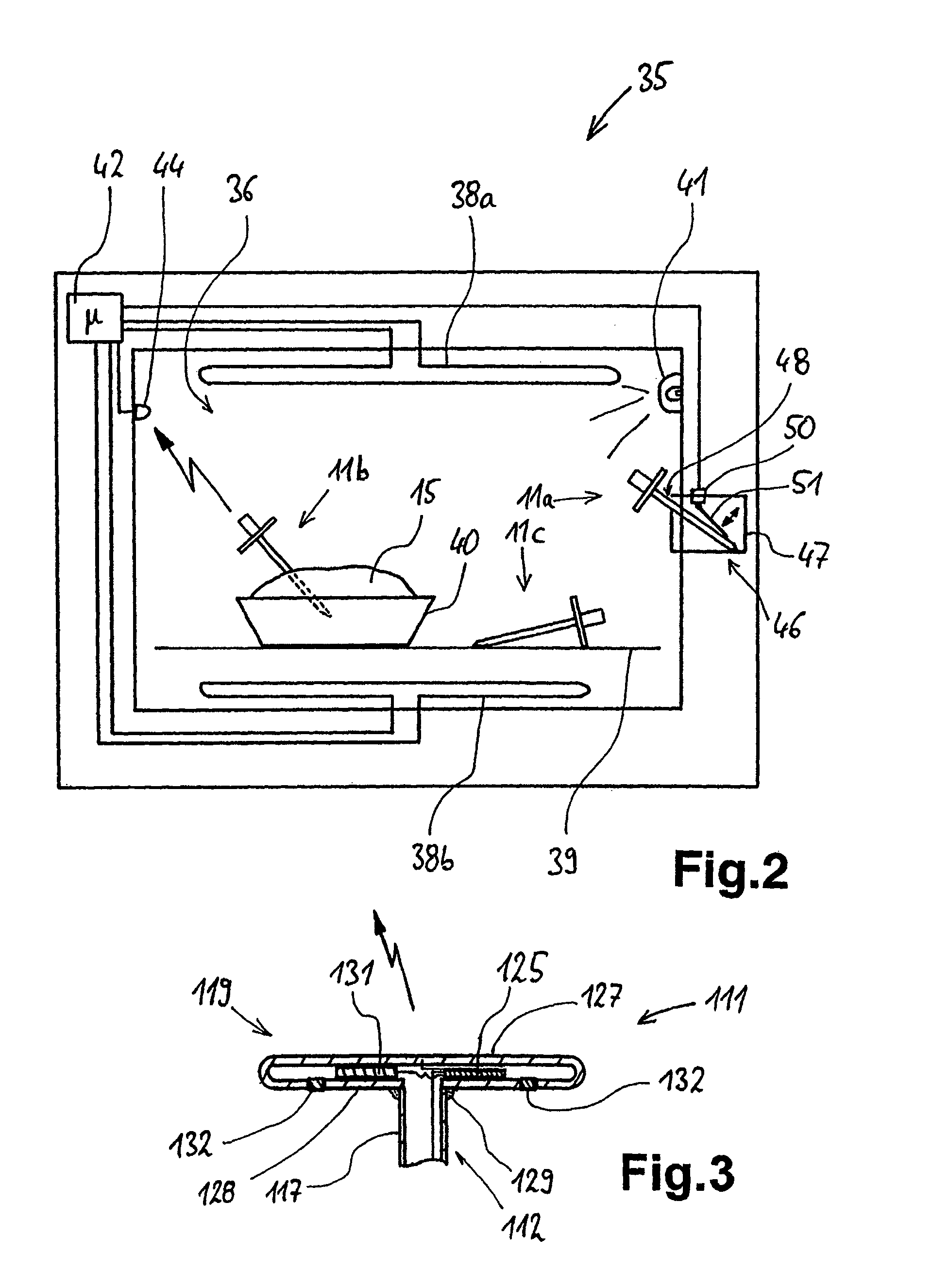Temperature probe for an oven, oven and method for operating an oven
a technology for ovens and probes, applied in the field of oven temperature probes, can solve the problems of difficult operation of ovens, difficulty in adjusting the temperature of ovens, and inability to explain the operation of an energy supply, etc., and achieve the effect of convenient and better handling
- Summary
- Abstract
- Description
- Claims
- Application Information
AI Technical Summary
Benefits of technology
Problems solved by technology
Method used
Image
Examples
Embodiment Construction
[0037]FIG. 1 shows a temperature probe 11 in accordance with one embodiment of the invention, said temperature probe being constructed in the manner of a so-called roast spit. The temperature probe 11 comprises a longitudinal, pipe-like housing 12 that terminates in a tip 13 toward the front. Said tip is inserted into a roast 15 that is the food product to be cooked. The housing comprises a housing jacket 17 of a metal that is suitable for the operating conditions of a roasting spit, for example, copper, for improved heat conductivity, possibly also coated, or provided with a thin stainless steel sleeve for foodstuff hygiene. A disk-shaped energy generator 19 adjoins the housing. This energy generator, in turn, has a terminal cap 22 in which the emitting means 21 are arranged—as would be an antenna or the like—in order to protect said emitting means.
[0038]A temperature sensor 24 is provided in the tip 13 of the temperature probe 11, said sensor being connected to an electronic devic...
PUM
| Property | Measurement | Unit |
|---|---|---|
| temperature | aaaaa | aaaaa |
| temperatures | aaaaa | aaaaa |
| size | aaaaa | aaaaa |
Abstract
Description
Claims
Application Information
 Login to View More
Login to View More - R&D
- Intellectual Property
- Life Sciences
- Materials
- Tech Scout
- Unparalleled Data Quality
- Higher Quality Content
- 60% Fewer Hallucinations
Browse by: Latest US Patents, China's latest patents, Technical Efficacy Thesaurus, Application Domain, Technology Topic, Popular Technical Reports.
© 2025 PatSnap. All rights reserved.Legal|Privacy policy|Modern Slavery Act Transparency Statement|Sitemap|About US| Contact US: help@patsnap.com



